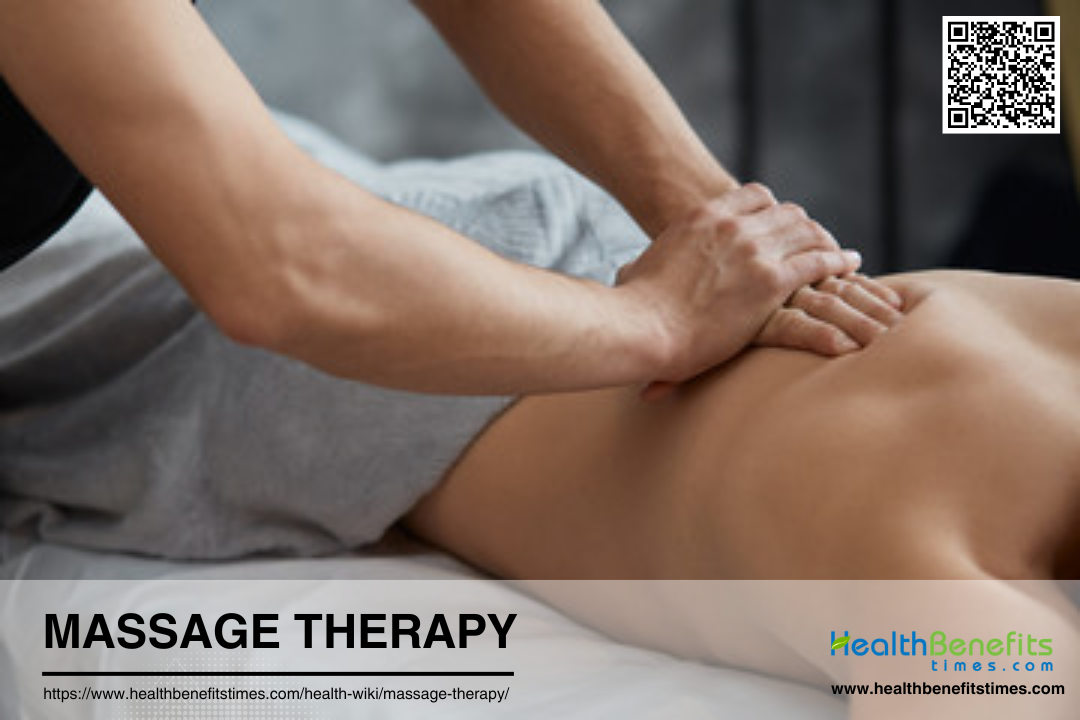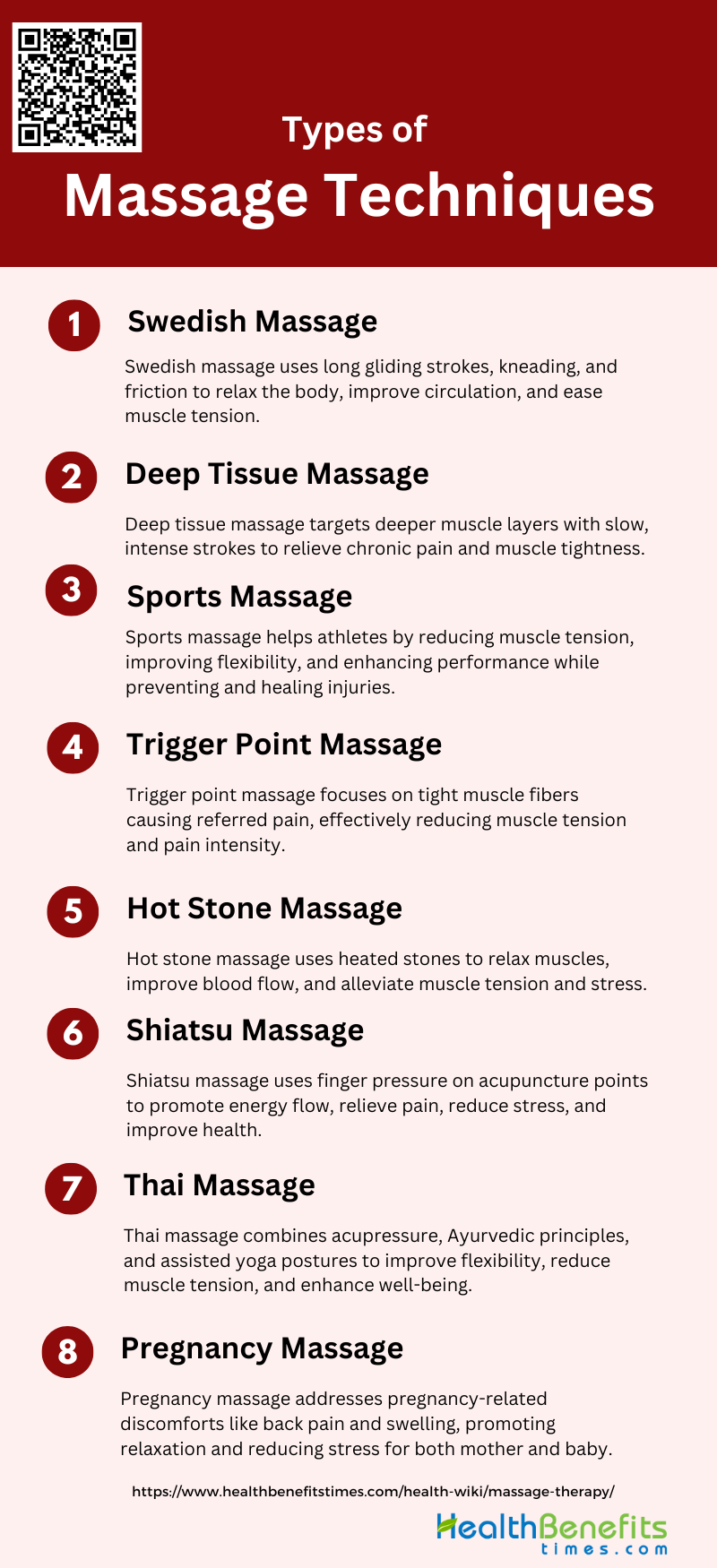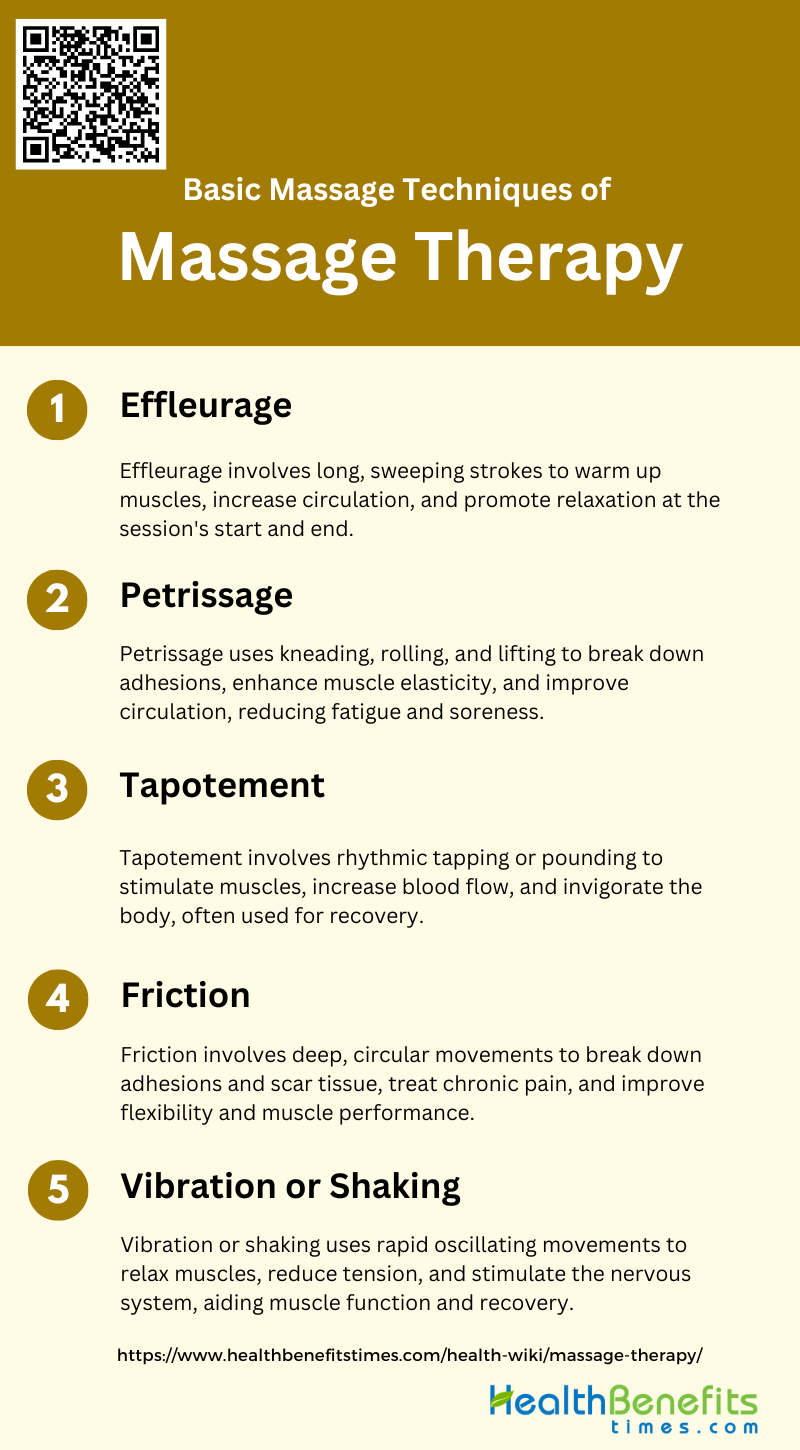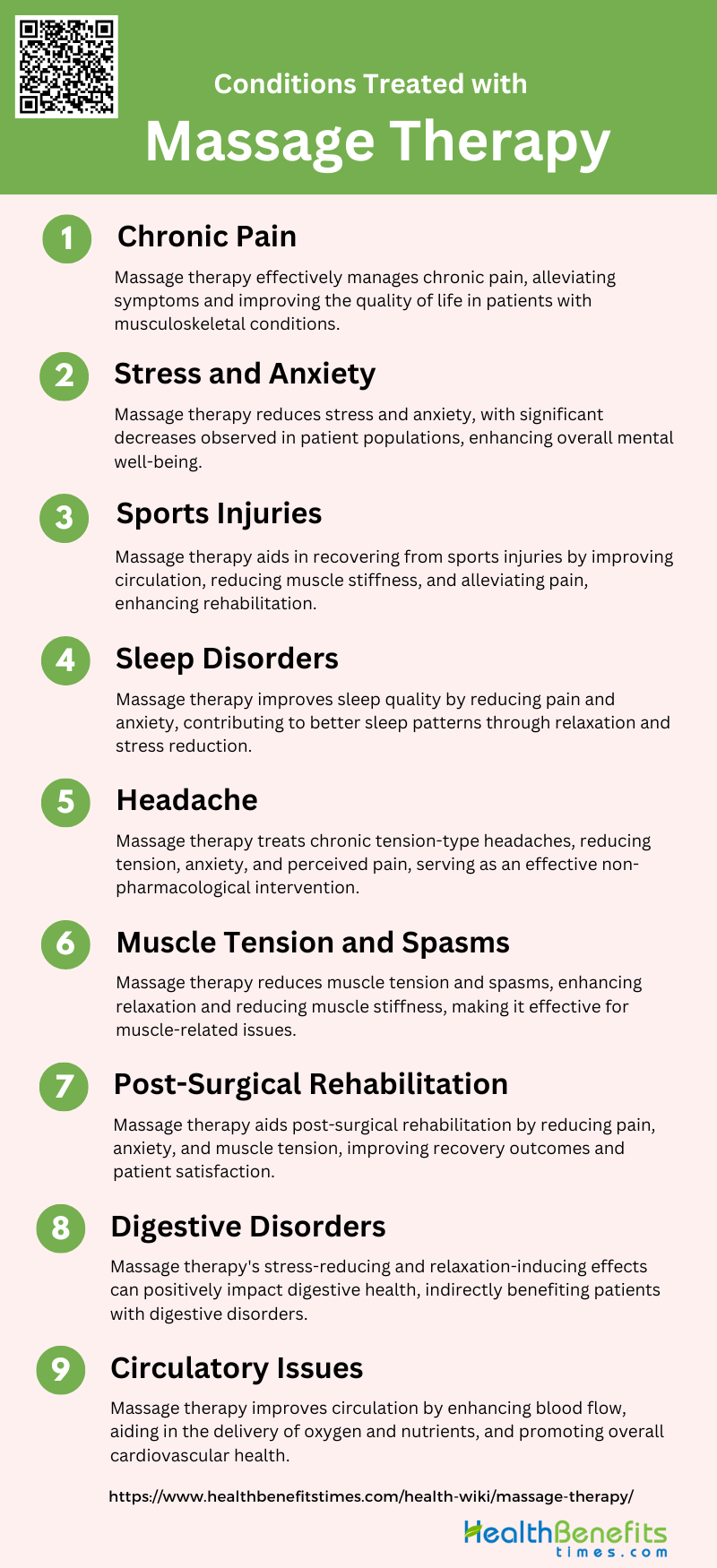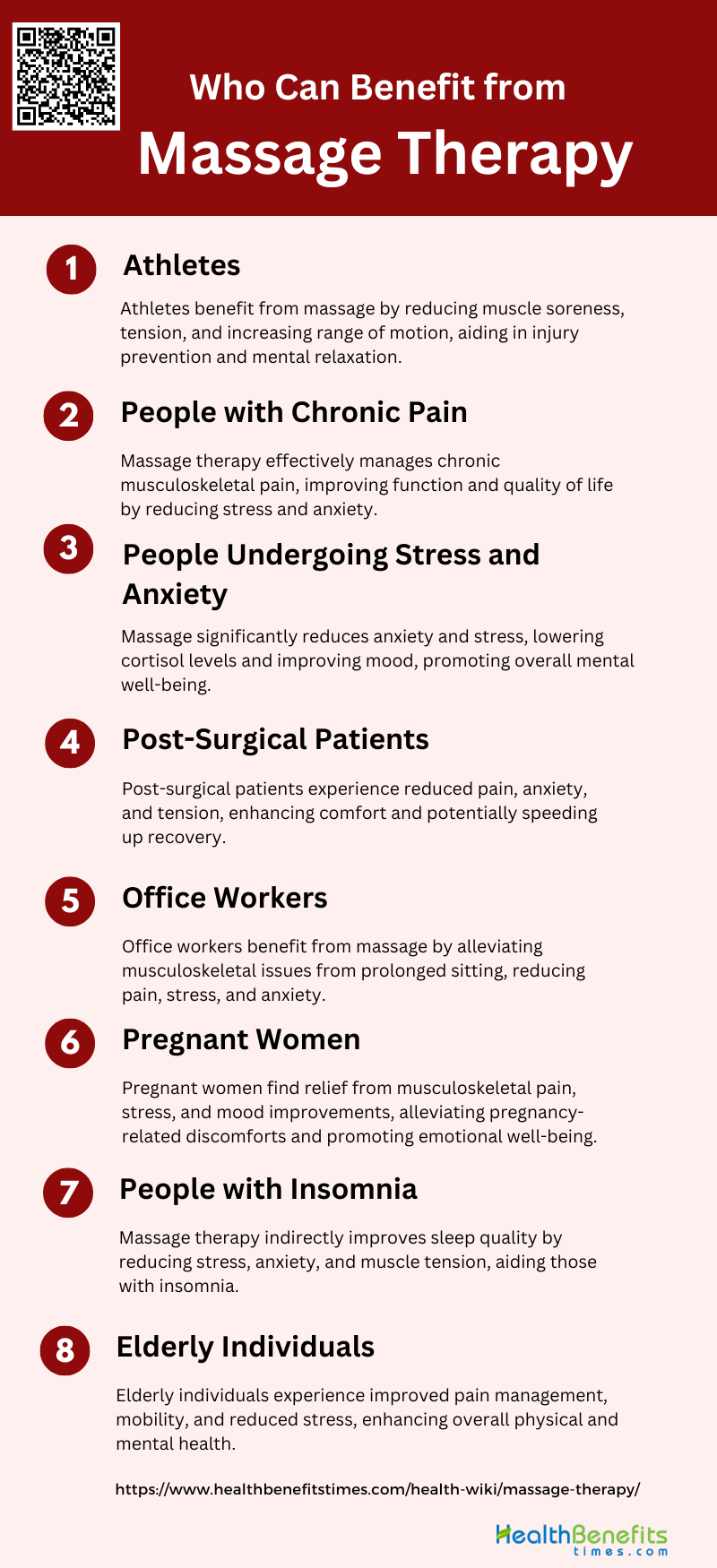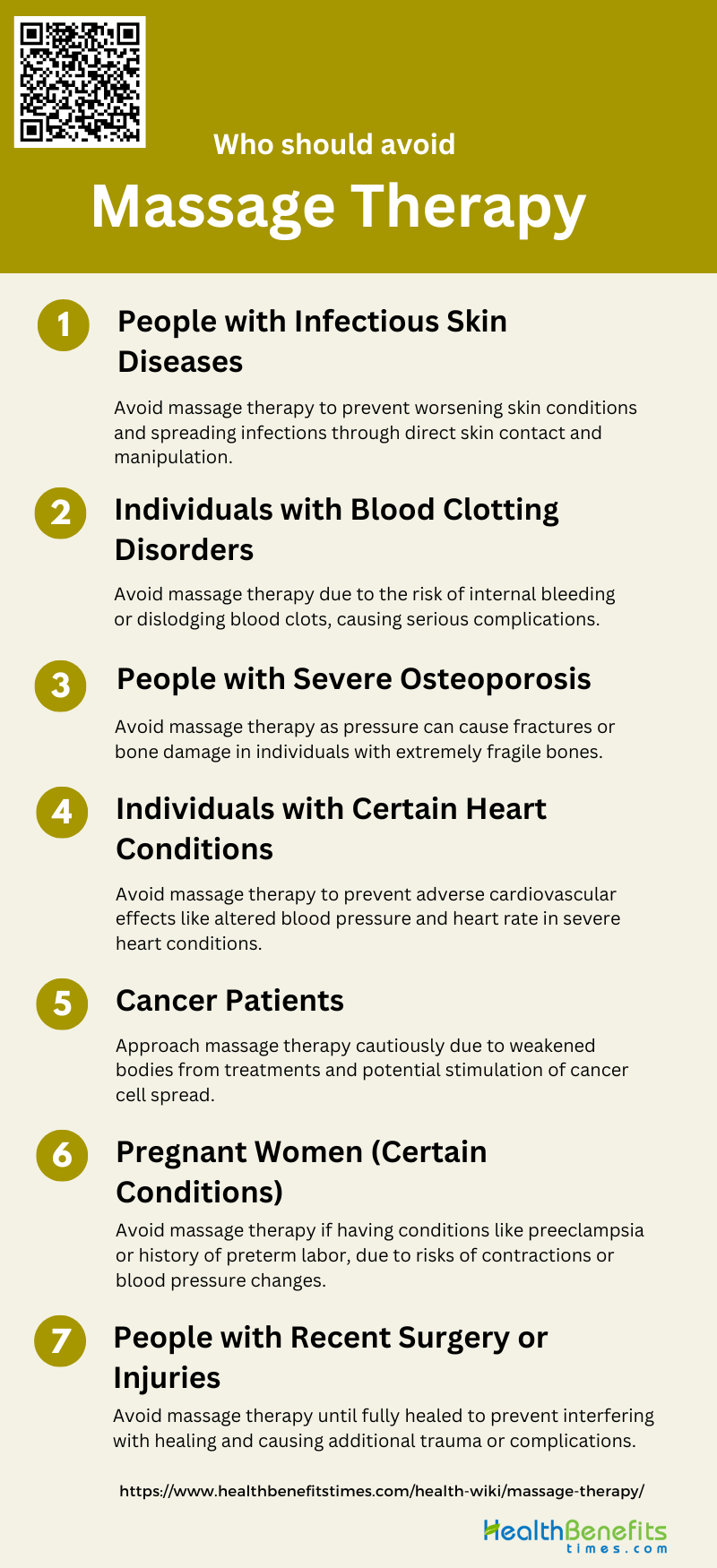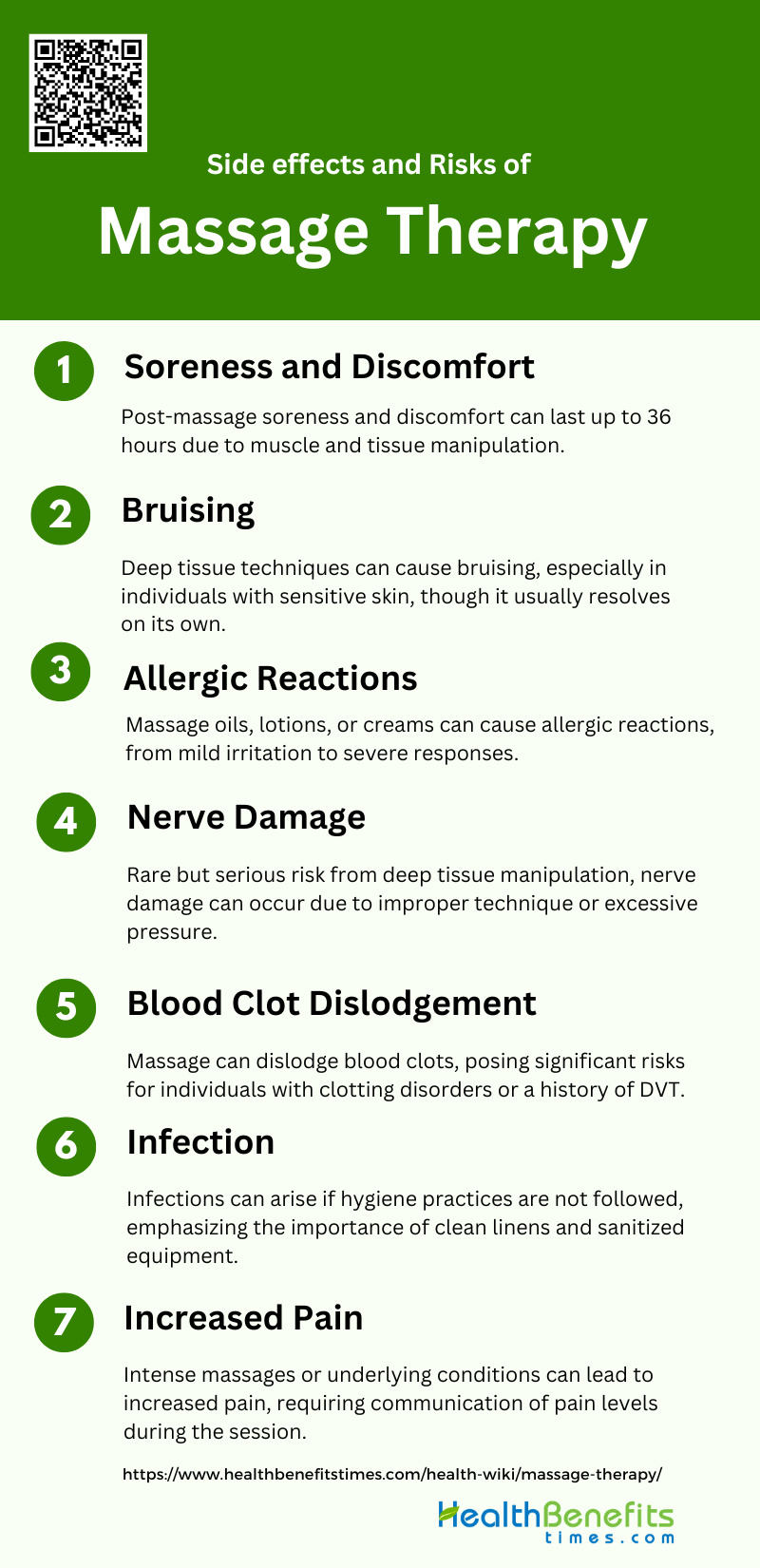Massage therapy is a holistic health practice that involves the manipulation of soft tissues in the body, including muscles, tendons, and ligaments, to enhance physical and emotional well-being. It encompasses a variety of techniques, such as kneading, pressing, and stroking, to alleviate pain, reduce stress, and promote relaxation. The practice is multidimensional, addressing not only physical ailments but also contributing to mental health by reducing anxiety and improving sleep quality. Massage therapy is utilized in various settings, from clinical environments to wellness centers, and is tailored to meet individual needs, whether for therapeutic, rehabilitative, or relaxation purposes.
Types of Massage Techniques
There are various types of massage techniques, each designed to address different needs and preferences. Here are some of the most common ones:
1. Swedish Massage
Swedish massage is one of the most popular and widely practiced forms of massage therapy. It involves a combination of techniques such as long gliding strokes, kneading, friction, tapping, and shaking motions. The primary goal of Swedish massage is to relax the entire body by increasing the oxygen flow in the blood and releasing toxins from the muscles. Studies have shown that Swedish massage can be effective in reducing pain and improving quality of life in patients with conditions like fibromyalgia, although its effects may not be as pronounced as other massage techniques. It is also commonly used to improve circulation, ease muscle tension, and promote overall relaxation.
2. Deep Tissue Massage
Deep tissue massage focuses on realigning deeper layers of muscles and connective tissue. It is especially helpful for chronic aches and pains and contracted areas such as a stiff neck, upper back, low back pain, leg muscle tightness, and sore shoulders. This technique uses slower strokes and more intense pressure to reach deeper layers of muscle and fascia. Research indicates that deep tissue massage can significantly improve pain, trigger points, disability, range of motion, and quality of life in individuals with myofascial pain syndrome. It has also been shown to be effective in reducing pain intensity and improving perceived recovery in patients with subacute or persistent neck pain.
3. Sports Massage
Sports massage is designed to help athletes prepare their bodies for optimal performance, recover after a big event, or function well during training. It emphasizes prevention and healing of injuries to the muscles and tendons. Sports massage can be tailored to the athlete’s sport of choice, focusing on areas of the body that are overused and stressed from repetitive and often aggressive movements. Studies have shown that sports massage can be beneficial in reducing muscle tension, improving flexibility, and enhancing athletic performance. It is also effective in managing pain and promoting faster recovery from injuries.
4. Trigger Point Massage
Trigger point massage focuses on specific areas of tight muscle fibers that can form in your muscles after injuries or overuse. These “trigger points” can cause pain in other parts of the body. For example, a trigger point in the back may produce referral pain in the neck. Research has demonstrated that trigger point massage can significantly increase the pressure-pain threshold at myofascial trigger points, providing relief from tension-type headaches and other pain syndromes. This technique is particularly effective in reducing muscle tension and pain intensity in patients with upper back pain associated with myofascial trigger points.
5. Hot Stone Massage
Hot stone massage involves the use of smooth, heated stones placed on specific parts of the body. The heat from the stones can help to relax muscles and improve blood flow to the affected area. This type of massage is often used to alleviate muscle tension, reduce stress, and promote relaxation. While there is limited specific research on hot stone massage, it is generally considered to be beneficial for reducing pain and improving overall well-being. The heat can also help to expand blood vessels, which encourages blood flow throughout the body, and may help to alleviate chronic pain conditions.
6. Shiatsu Massage
Shiatsu is a form of Japanese bodywork that uses finger pressure to stimulate acupuncture points on the body. The goal of Shiatsu is to promote the flow of energy (Qi) and restore balance within the body. This technique can be effective in relieving pain, reducing stress, and improving overall health. Research has shown that Shiatsu can improve pain, pressure pain threshold, fatigue, sleep, and quality of life in patients with fibromyalgia. It is also beneficial in managing various other conditions, including musculoskeletal pain and tension-type headaches.
7. Thai Massage
Thai massage is a traditional therapy that combines acupressure, Indian Ayurvedic principles, and assisted yoga postures. It is performed on a mat on the floor, and the therapist uses their hands, knees, legs, and feet to move the client into a series of stretches. Thai massage can help to improve flexibility, reduce muscle tension, and enhance overall well-being. Studies have shown that Thai massage is effective in reducing pain intensity, muscle tension, and pain associated with myofascial trigger points 9. It is also comparable to Swedish massage in terms of its effectiveness in managing back pain9.
8. Pregnancy Massage
Pregnancy massage, also known as prenatal massage, is designed to address the specific needs of pregnant women. It can help to alleviate common pregnancy-related discomforts such as back pain, leg cramps, and swelling. This type of massage can also promote relaxation and reduce stress, which is beneficial for both the mother and the baby. Research has indicated that massage therapy can have positive effects on prenatal depression and other pregnancy-related conditions. It is important that pregnancy massage is performed by a therapist who is trained in the specific techniques and precautions required for pregnant women.
Basic Massage Techniques of Massage Therapy
Massage therapy involves several basic techniques that are commonly used to promote relaxation, relieve muscle tension, and improve circulation. Here are some of the fundamental techniques:
1. Effleurage
Effleurage, also known as gliding or stroking, is a fundamental massage technique characterized by long, sweeping strokes. It is often used at the beginning and end of a massage session to warm up the muscles and promote relaxation. Effleurage helps in increasing blood circulation, reducing muscle tension, and preparing the body for deeper massage techniques. Studies have shown that effleurage is frequently applied in sports massage to alleviate delayed onset muscle soreness (DOMS) and enhance recovery from fatigue. Additionally, it has been found effective in improving respiratory function in children with lower respiratory tract infections.
2. Petrissage
Petrissage involves kneading, rolling, and lifting the muscles to enhance deeper tissue manipulation. This technique is effective in breaking down adhesions, improving muscle elasticity, and promoting better circulation. Petrissage is commonly used in sports massage to address muscle fatigue and soreness, particularly after intense training sessions or competitions. It has also been shown to reduce anxiety and pain perception in patients with cancer, contributing to overall relaxation and well-being. Furthermore, petrissage is a key component of Swedish massage, which has been found effective in lowering blood pressure in hypertensive patients.
3. Tapotement
Tapotement, or percussion, involves rhythmic tapping, hacking, or pounding movements. This technique is used to stimulate the muscles, increase blood flow, and invigorate the body. Tapotement is less commonly applied compared to other techniques but is still valuable in certain therapeutic contexts. It has been used in sports massage to enhance muscle recovery and reduce fatigue. However, studies have shown mixed results regarding its effectiveness in altering muscle blood flow, suggesting that its benefits may be more related to neuromuscular stimulation rather than circulatory changes.
4. Friction
Friction massage involves deep, circular movements applied to specific areas to break down adhesions and scar tissue. This technique is particularly useful for treating chronic pain and muscle tightness. Friction massage is often employed in sports massage to address localized muscle issues and improve flexibility. It has also been found effective in reducing muscle soreness and enhancing physical performance in athletes. Additionally, friction is a component of Swedish massage, contributing to its overall effectiveness in promoting relaxation and reducing blood pressure.
5. Vibration or Shaking
Vibration or shaking involves rapid, oscillating movements applied to the muscles to promote relaxation and reduce muscle tension. This technique is used to stimulate the nervous system and improve muscle function. Vibration has been shown to be effective in reducing muscle soreness and improving physical performance in athletes. It is also a part of massage therapy used to optimize respiratory function in children with lower respiratory tract infections. However, its effectiveness in altering muscle blood flow remains inconclusive, with some studies suggesting limited impact.
Conditions Treated with Massage Therapy
Massage therapy can be beneficial for a variety of conditions. Here are some common conditions that are often treated with massage therapy:
1. Chronic Pain
Massage therapy has been shown to be effective in managing chronic pain, particularly in patients with musculoskeletal conditions. A systematic review highlighted that self-management strategies involving massage can significantly alleviate symptoms of chronic pain, stress, and anxiety, thereby improving health-related quality of life. Additionally, massage therapy has been found to reduce pain intensity and unpleasantness in postoperative cardiac surgery patients, suggesting its broader applicability in chronic pain management.
2. Stress and Anxiety
Massage therapy is effective in reducing stress and anxiety levels in various patient populations. Studies have demonstrated significant decreases in anxiety and tension among cardiac surgery patients who received massage therapy compared to those who did not. Furthermore, a systematic review and meta-analysis confirmed that massage therapy can alleviate postoperative anxiety, although the heterogeneity of the studies suggests the need for more standardized protocols.
3. Sports Injuries
While the provided data does not specifically address sports injuries, the principles of massage therapy in reducing pain, muscle tension, and promoting relaxation can be extrapolated to this context. Massage therapy is known to enhance recovery by improving circulation, reducing muscle stiffness, and alleviating pain, which are critical factors in the rehabilitation of sports injuries.
4. Sleep Disorders
Massage therapy has been associated with improvements in sleep quality, particularly through its effects on reducing pain and anxiety. By alleviating these symptoms, massage therapy can indirectly contribute to better sleep patterns. Although specific studies on sleep disorders were not provided, the general benefits of massage on relaxation and stress reduction suggest its potential utility in managing sleep disorders.
5. Headache
Massage therapy has shown promise in treating chronic tension-type headaches. A pilot study found that head-neck massage significantly increased heart rate variability and decreased tension, anxiety, and perceived pain in patients with chronic tension-type headaches. These findings suggest that massage therapy can be an effective non-pharmacological intervention for headache management.
6. Muscle Tension and Spasms
Massage therapy is highly effective in reducing muscle tension and spasms. Multiple studies have reported significant reductions in muscular tension among cardiac surgery patients who received massage therapy compared to those who did not. The therapy’s ability to enhance relaxation and reduce muscle stiffness makes it a valuable treatment for muscle tension and spasms.
7. Post-Surgical Rehabilitation
Massage therapy plays a crucial role in post-surgical rehabilitation by reducing pain, anxiety, and muscle tension, thereby enhancing overall patient satisfaction and recovery. Studies have consistently shown that massage therapy significantly improves postoperative outcomes in cardiac surgery patients, making it a valuable adjunct to standard postoperative care.
8. Digestive Disorders
While the provided data does not directly address digestive disorders, the stress-reducing and relaxation-inducing effects of massage therapy can have a positive impact on digestive health. Stress and anxiety are known to exacerbate digestive issues, and by alleviating these symptoms, massage therapy may indirectly benefit patients with digestive disorders.
9. Circulatory Issues
Massage therapy can improve circulation by enhancing blood flow and reducing muscle tension. This is particularly beneficial for patients with circulatory issues, as improved circulation can aid in the delivery of oxygen and nutrients to tissues, promoting healing and overall cardiovascular health. Studies on cardiac surgery patients have shown that massage therapy can be safely incorporated into postoperative care to improve patient outcomes.
Who Can Benefit from Massage Therapy?
Massage therapy offers a range of benefits that can improve the well-being of various individuals. From athletes seeking muscle recovery to those dealing with chronic pain or stress, massage therapy can provide relief and enhance overall health. Here are some groups who can particularly benefit from regular massage sessions:
1. Athletes
Athletes can significantly benefit from massage therapy, particularly for recovery and performance enhancement. Studies have shown that post-exercise massage can help reduce delayed onset muscle soreness (DOMS) and improve perceptions of recovery, although its direct impact on performance enhancement remains debatable. Massage therapy can also aid in reducing muscle tension and increasing the range of motion, which can be crucial for injury prevention and overall athletic performance. While the physiological benefits such as improved blood flow and reduced muscle stiffness are still under investigation, the psychological benefits, including reduced anxiety and improved mood, are well-documented.
2. People with Chronic Pain
Massage therapy has been found to be effective in managing chronic pain, particularly musculoskeletal pain. Systematic reviews indicate that massage can reduce pain and improve function in conditions such as shoulder pain, knee osteoarthritis, and low back pain. Additionally, massage therapy can alleviate symptoms of chronic conditions by reducing stress, anxiety, and improving health-related quality of life (HR-QOL). The feasibility of massage as a self-management strategy for chronic pain is also supported, making it a viable option for long-term pain management.
3. People Undergoing Stress and Anxiety
Massage therapy is highly beneficial for individuals experiencing stress and anxiety. Research has shown that massage can significantly reduce anxiety and tension, particularly in clinical settings such as post-surgical recovery. The psychological benefits of massage include decreased levels of stress hormones like cortisol, improved mood, and enhanced relaxation. These effects make massage therapy a valuable tool for managing stress and anxiety, contributing to overall mental well-being.
4. Post-Surgical Patients
Post-surgical patients can greatly benefit from massage therapy, which has been shown to reduce pain, anxiety, and tension during the recovery period. Studies involving cardiac surgery patients have demonstrated significant decreases in these symptoms following massage therapy sessions. The incorporation of massage into post-surgical care can enhance patient satisfaction and potentially expedite the healing process by improving overall comfort and reducing stress. This makes massage therapy a valuable adjunct to standard post-operative care.
5. Office Workers
Office workers, who often suffer from musculoskeletal issues due to prolonged sitting and poor ergonomics, can benefit from massage therapy. Research indicates that massage can alleviate common musculoskeletal disorders, such as shoulder pain and low back pain, by reducing pain and improving function. Additionally, massage therapy can help reduce stress and anxiety, which are prevalent among office workers due to high job demands and sedentary lifestyles. Regular massage sessions can thus contribute to better physical and mental health for office workers.
6. Pregnant Women
Pregnant women can benefit from massage therapy in various ways, including relief from musculoskeletal pain, reduced stress, and improved mood. Although specific studies on pregnant women were not provided, the general benefits of massage for pain relief and stress reduction are well-documented. Massage therapy can help alleviate common pregnancy-related discomforts such as back pain and leg cramps, and also promote relaxation and emotional well-being, making it a valuable complementary therapy during pregnancy.
7. People with Insomnia
Massage therapy can be an effective intervention for people suffering from insomnia. While specific studies on insomnia were not provided, the general benefits of massage in reducing stress, anxiety, and improving relaxation can indirectly contribute to better sleep quality. The reduction in muscle tension and the promotion of a relaxed state can help individuals fall asleep more easily and enjoy deeper, more restorative sleep. Therefore, massage therapy can be a useful tool in managing insomnia and improving overall sleep health.
8. Elderly Individuals
Elderly individuals can benefit from massage therapy through improved pain management, enhanced mobility, and reduced stress. Research indicates that massage can alleviate chronic pain conditions common in older adults, such as arthritis and back pain, by reducing pain and improving function. Additionally, massage therapy can enhance the quality of life by reducing anxiety and promoting relaxation, which are crucial for the well-being of elderly individuals. Regular massage sessions can thus contribute to better physical and mental health in the elderly population.
Who should avoid Massage Therapy?
While massage therapy offers numerous benefits, it is not suitable for everyone. Certain individuals should avoid massage therapy due to specific health conditions or circumstances that could be exacerbated by the treatment. Here are some groups who should steer clear of massage therapy:
1. People with Infectious Skin Diseases
Individuals with infectious skin diseases should avoid massage therapy due to the risk of exacerbating their condition and spreading the infection. Massage involves direct contact with the skin, which can lead to the transmission of infectious agents to other parts of the body or to the therapist. Additionally, the manipulation of infected skin can cause further irritation and potentially worsen the infection. According to a systematic review, adverse effects of massage therapy, although rare, can include skin-related issues, which underscores the importance of avoiding massage in cases of infectious skin diseases1.
2. Individuals with Blood Clotting Disorders
People with blood clotting disorders, such as hemophilia or deep vein thrombosis, should avoid massage therapy due to the risk of causing internal bleeding or dislodging blood clots. The pressure applied during a massage can potentially disrupt blood clots, leading to serious complications such as pulmonary embolism. A review of adverse effects associated with massage therapy highlighted cases of embolization and haematoma, indicating that individuals with clotting disorders are at a higher risk of experiencing severe adverse events.
3. People with Severe Osteoporosis
Individuals with severe osteoporosis should avoid massage therapy because their bones are extremely fragile and susceptible to fractures. The pressure exerted during a massage can cause bone damage or fractures in people with this condition. The review of adverse effects of massage therapy includes instances of nerve damage and other complications, which can be particularly dangerous for those with weakened bones. Therefore, it is crucial for individuals with severe osteoporosis to avoid massage therapy to prevent potential injuries.
4. Individuals with Certain Heart Conditions
People with certain heart conditions, such as severe hypertension or heart failure, should avoid massage therapy due to the potential for adverse cardiovascular effects. Massage can influence blood pressure and heart rate, which may pose risks for individuals with compromised heart function. A study on the effects of massage therapy on blood pressure indicated that while massage can lower blood pressure in prehypertensive women, its effects are not long-lasting and may not be suitable for those with more severe cardiovascular conditions. Therefore, individuals with serious heart conditions should consult their healthcare provider before considering massage therapy.
5. Cancer Patients
Cancer patients should approach massage therapy with caution, especially if they are undergoing treatments such as chemotherapy or radiation. These treatments can weaken the body and make it more susceptible to infections and other complications. Additionally, certain types of massage may stimulate the lymphatic system, which could potentially spread cancer cells. The review of adverse effects of massage therapy includes serious events such as pulmonary embolism and nerve damage, which could be particularly harmful to cancer patients. Therefore, it is essential for cancer patients to consult their oncologist before receiving massage therapy.
6. Pregnant Women (Certain Conditions)
Pregnant women, particularly those with certain conditions such as preeclampsia or a history of preterm labor, should avoid massage therapy. While massage can offer relaxation and pain relief, it can also stimulate uterine contractions or affect blood pressure, posing risks to both the mother and the baby. The review of adverse effects of massage therapy includes serious events such as ruptured uterus, indicating that certain massage techniques may not be safe during pregnancy. Pregnant women should seek advice from their healthcare provider to determine if massage therapy is appropriate for their specific condition.
7. People with Recent Surgery or Injuries
Individuals who have recently undergone surgery or sustained injuries should avoid massage therapy until they have fully healed. Massage can interfere with the healing process by causing additional trauma to the affected area or dislodging surgical staples or sutures. The review of adverse effects of massage therapy includes cases of nerve damage and other complications, which can be particularly detrimental to those recovering from surgery or injuries. It is crucial for these individuals to allow sufficient time for healing and to consult their healthcare provider before considering massage therapy.
Choosing the Right Massage Therapist
Choosing the right massage therapist involves considering several key factors to ensure a beneficial and safe experience. First, verify the therapist’s credentials and certifications to ensure they are qualified and adhere to professional standards. It’s also important to assess their experience and specialization, especially if you have specific needs such as sports massage, deep tissue, or therapeutic massage for medical conditions. Personal recommendations and online reviews can provide insights into the therapist’s reputation and effectiveness. Additionally, consider the therapist’s communication skills and their ability to understand and address your individual needs. Finally, ensure the environment where the massage is conducted is clean, comfortable, and conducive to relaxation. Taking these steps will help you find a massage therapist who can provide a personalized and effective treatment.
Side effects and Risks of Massage Therapy
While massage therapy can be beneficial for many, it is not without potential side effects and risks. Understanding these can help individuals make informed decisions about whether massage therapy is right for them. Here are some common side effects and risks associated with massage therapy:
1. Soreness and Discomfort
Soreness and discomfort are common side effects of massage therapy, often resulting from the physical manipulation of muscles and tissues. A study found that 10% of massage clients experienced minor discomfort post-session, typically starting within 12 hours and lasting up to 36 hours. This discomfort is usually mild and can be attributed to the body’s response to the pressure and stretching applied during the massage. Another study noted that while massage can reduce the intensity of soreness from delayed onset muscle soreness (DOMS), it does not eliminate it entirely. Therefore, clients should be informed about the possibility of temporary soreness following a massage session.
2. Bruising
Bruising can occur as a result of the pressure applied during a massage, especially if the therapist uses deep tissue techniques. Although not frequently reported, bruising is a potential risk, particularly in individuals with sensitive skin or those prone to bruising. A systematic review highlighted that soft tissue trauma, including bruising, is one of the complications associated with massage therapy. The severity of bruising can vary, but it is generally considered a minor adverse effect that resolves on its own. Clients should be advised to communicate any discomfort during the session to minimize the risk of bruising.
3. Allergic Reactions
Allergic reactions can occur due to the use of massage oils, lotions, or creams. These reactions can range from mild skin irritation to more severe allergic responses. A review of adverse effects associated with massage therapy excluded those related to massage oils, indicating that such reactions are recognized but not the primary focus of safety assessments. Clients with known allergies should inform their therapist beforehand and may opt for hypoallergenic products to reduce the risk of allergic reactions.
4. Nerve Damage
Nerve damage, although rare, is a serious risk associated with certain massage techniques, particularly those involving deep tissue manipulation. Case reports have documented instances of nerve damage, including conditions like posterior interosseous syndrome and interosseous nerve palsy, following massage therapy. These adverse effects are often linked to improper technique or excessive pressure applied to sensitive areas. It is crucial for massage therapists to be well-trained and for clients to report any unusual sensations immediately to prevent potential nerve damage.
5. Blood Clot Dislodgement
The dislodgement of blood clots is a significant risk, particularly for individuals with a history of deep vein thrombosis (DVT) or other clotting disorders. Massage can potentially mobilize clots, leading to serious complications such as pulmonary embolism. A review identified pulmonary embolism as one of the serious adverse effects associated with massage therapy. Clients with a history of clotting disorders should consult their healthcare provider before undergoing massage therapy and inform their therapist of their medical history to mitigate this risk.
6. Infection
Infection is a potential risk, especially if proper hygiene practices are not followed. This can occur through breaks in the skin or the use of contaminated equipment. Although not commonly reported, the risk of infection underscores the importance of maintaining high standards of cleanliness in massage therapy settings. A systematic review noted that while serious adverse effects are rare, maintaining proper hygiene is essential to prevent infections. Clients should ensure that their therapist follows strict hygiene protocols, including the use of clean linens and sanitized equipment.
7. Increased Pain
Increased pain can occur if the massage is too intense or if the client has underlying conditions that are exacerbated by the therapy. A study on pain-related massage reported that complications such as disc herniation and spinal cord injury can lead to increased pain. Additionally, another study found that while massage can provide immediate relief, it may not have sustained effects on pain management. Clients should communicate their pain levels during the session and seek advice from their healthcare provider if they experience persistent or worsening pain after a massage.


